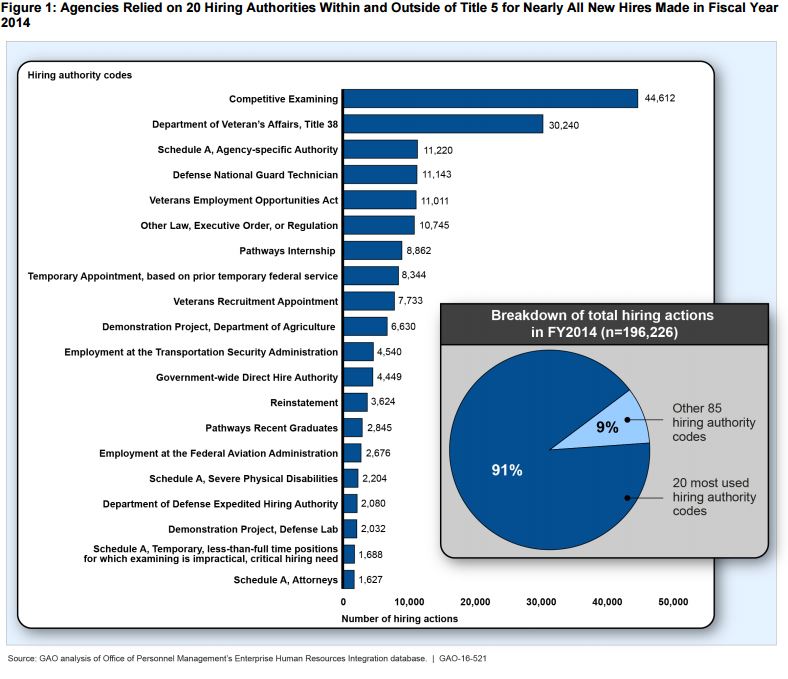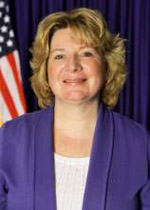
Confused by too many hiring options, agencies stick with what they know
Agencies relied on 20 out of 105 different hiring authorities to fill the majority of open positions in 2014, the Government Accountability Office said. And neither...
Agencies relied on a small fraction of hiring authorities to fill most of their open positions in 2014 — a sign that some organizations are confused by too many options, the Government Accountability Office says.
Agencies used 20 out 105 different hiring authorities to make 178,000, or 90 percent, of new hires in 2014. But they used many more — 85 separate hiring codes — to fill just 18,000 appointments during the same year.
Moreover, the Office of Personnel Management and individual agencies are not using the data they have to measure which hiring authorities are working best or whether those codes are working as intended, GAO said.
A hiring authority is a law, executive order or regulation that lets agencies hire a person into federal service. They also describe who’s eligible to fill a position, how long that position should stay open and what rules agencies should follow to make a new hire.
Agencies most often used the competitive examining authority, which means agencies post the vacancy to USAJobs.gov, rank their applicants and use a category rating to select a new hire.

GAO specifically spoke with three individual agencies: the Energy Department, National Institutes of Health and Air Force Materiel Command.
Agencies are required to collect and report time-to-hire information and satisfaction surveys for all the positions they post on USAJobs. But neither OPM nor the three agencies said they used this data to study how well these hiring authorities working, GAO said.
“OPM officials said they do not know if agencies rely on a small number of authorities because agencies are unfamiliar with other authorities, or if they have found other authorities to be less effective in meeting their needs,” GAO said.
But by not measuring and evaluating this kind of data, OPM is missing out on several opportunities to improve the federal hiring process, GAO said.
“A better understanding of the relative effectiveness of different hiring authorities could enhance agencies’ awareness of the implications different authorities may have on the composition of their workforce, GAO said. “For example, when agencies use one hiring authority to achieve a particular public policy objective, it may have implications for the attainment of a different objective.”
OPM also uses a single hiring code for “all other laws, executive orders and regulations.” This “other” category ranked as the sixth most commonly used hiring authority. But because of OPM limitations, it’s unclear for what purposes agencies are using this authority, GAO said.
Instead, OPM could use the information they do collect to work with Congress to eliminate hiring authorities that are too complicated or make changes to the codes that need revisions. GAO in fact formally recommended that OPM begin using time-to-hire and satisfaction data and work with Congress to consolidate and make changes to the authorities that are falling short of their original intentions.
OPM also said this kind of analysis is difficult, but it has oversight on some, but not all, federal hiring authorities.
GAO acknowledged that its report does not incorporate data from 2015 or this year, when OPM started a concerted effort to better train agency HR and hiring managers on the 105 different authorities. The Hiring Excellence campaign, which OPM began in January, is a program that sends OPM leaders to agency field offices to teach HR specialists about some of these hiring authorities and when they should use them.
OPM should find ways it can continue that program and develop other tools and resources that will help hiring managers into the future, GAO said.
And for the hiring authorities that it does oversee, OPM should work with the Chief Human Capital Officers Council to study those codes and gather feedback agency CHCOs, GAO said.
And it didn’t rule out the possibility that OPM may need to request legislative changes to revise or eliminate some of the 105 authorities.
“Use this information to determine whether opportunities exist to refine, consolidate, eliminate or expand agency-specific authorities to other agencies and implement changes where OPM is authorized, including seeking presidential authorization (as necessary) in order to do so,” GAO said.
OPM said it generally agreed with all of GAO’s suggestions.
Copyright © 2025 Federal News Network. All rights reserved. This website is not intended for users located within the European Economic Area.
Nicole Ogrysko is a reporter for Federal News Network focusing on the federal workforce and federal pay and benefits.
Follow @nogryskoWFED





